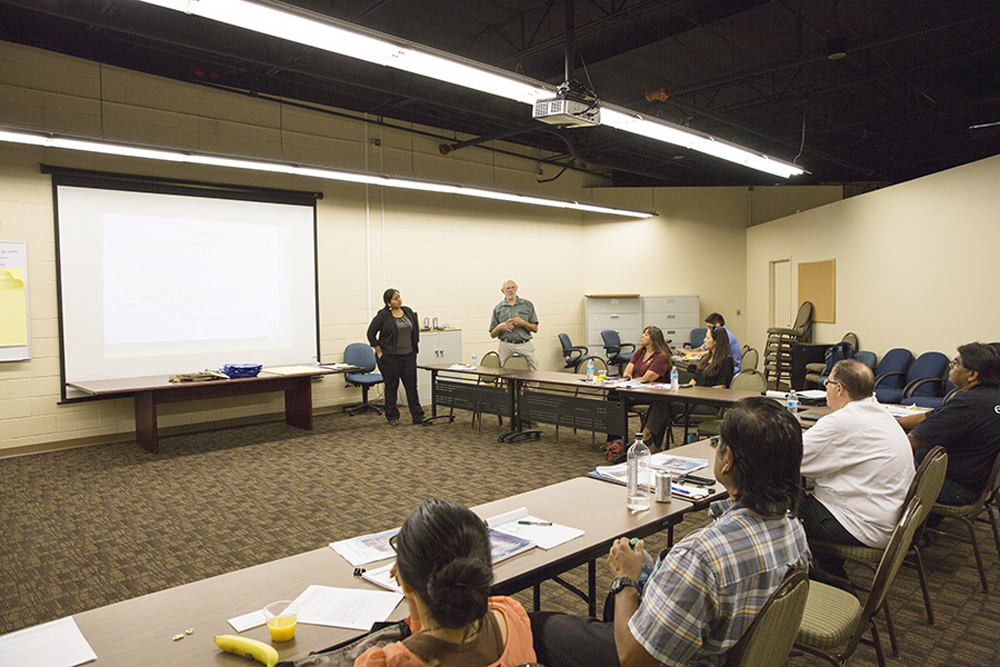DEQ hosts meeting on building ‘green’ in the Community
August 19, 2016
Christopher Lomahquahu
Gila River Indian News
The Gila River Indian Community is exploring environmentally greener ways of building homes in the Community.
The Department of Environmental Quality hosted a Tribal Green Building Toolkit meeting at the Gila River Property & Supply conference room on July 12.
David Eisenberg, Executive Director at the Development Center for Appropriate Technology, and Althea Walker, DEQ Environmental Outreach and Education Specialist, hosted the meeting.
Eisenberg is a consultant with the Environmental Protection Agency and is partly responsible for working with tribes to implement alternative forms of green building into their home building projects and to obtain comments and feedback.
“The kick-off meeting was our first attempt at incorporating or integrating green building into [our] codes,” said Walker.
The meeting was a way for them to understand the process of implementing green building codes into the Community’s current building codes by inviting stakeholders from various GRIC housing entities.
“The green building toolkit essentially emerged out of an effort by the Environmental Protection Agency to develop better resources for tribal communities,” said Eisenberg.
The toolkit incorporates ideas on how to develop programs and expertise in developing policy around green building.
He said it is a way to underline a tribal community’s desire to design and build projects to make sure goals represent the things that are most important to tribal communities in regards to building codes and standards.
Walker said the meeting helped them determine what tribal departments are responsible for different aspects of home building and that it was beneficial to make connections with them.
“We have been working with them and trying to learn more, so I think the takeaway from the meeting is that we really learned how we can make a greater impact in regards to green building in the Community,” she said.
The toolkit was designed to help tribal stakeholders and developers to understand how they can adopt building codes to support green building practices.
It recognizes the ancestral nature of tribes like the Community, who have a long history of “green” building.
The toolkit makes recommendations for the integrations of cultural/traditional elements into design and building, the reduction of natural resources and minimizing non-renewable energy consumption.
These are just a few of the ideas that tribes are able to factor in when building new homes and infrastructure.
Walker said, “The ultimate goal is to provide a green building resource that will benefit the entire Community now and in the future.”
In the meantime DEQ and their consulting partners with the EPA will continue to learn from departments like Tribal Projects and with Building and Safety to get an understanding of how they can determine the appropriate steps to take in incorporating green building.
On a recent tour of the Community on Aug. 11, DEQ and Eisneberg took a look at some of the homes under construction to see how some forms of green building are being implemented.
Some of the homes under construction incorporated more efficient building materials and solar tubes that channel light from the sun into the home.
Features like these are just some of the steps the Community is taking to make energy efficient homes that require less energy and are cost-efficient.
Eisenberg said that he was impressed at the amount of green building done with current and future building projects going on in the Community and that the tribe is on pace with what has been developed in the toolkit.

